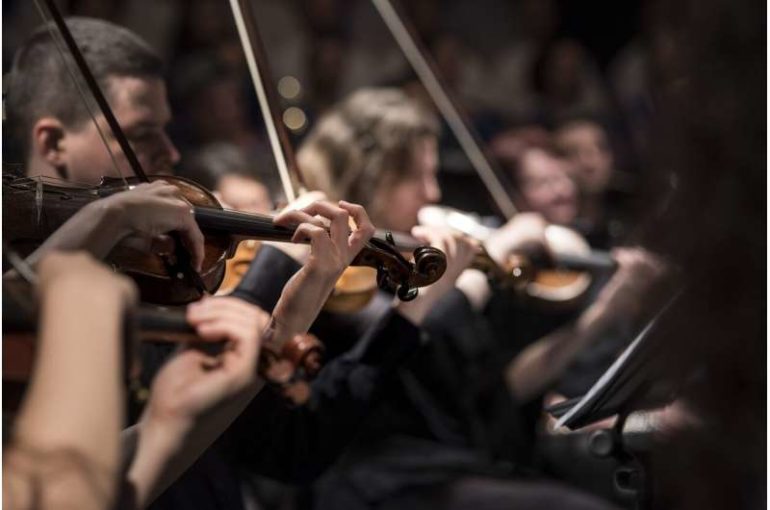A team of researchers at the University of Utah Salt Lake City has found, via simulation, that it is possible to rearrange musicians playing wind instruments in an orchestra to reduce the spread of disease-laden aerosols. In their paper published in the journal Science Advances, the group describes simulations they ran that showed airflow patterns during orchestral performances and what they found.
As the pandemic spread across the world, one of the groups immediately impacted was musicians, particularly those who play wind instruments. Once it was determined that the virus behind COVID-19 was carried through the air as part of aerosols, officials began canceling orchestral performances.
The pandemic also prevented musicians from practicing together, which is essential for maintaining skills. Now, even as lockdowns are eased in many countries, orchestral performances have still not resumed due to fears of spreading the diseases among musicians who have not been vaccinated. In this new effort, the researchers have found a way to minimize the risk involved in orchestral rehearsals and performances by rearranging where the players sit as they play.
To learn more about the flow of air and the aerosols in it during orchestral performances, the researchers gathered data from prior experiments showing how air moves after being expelled from different instruments. This data was put into an air movement simulation, along with other parameters, such as ventilation for the given venue.
The team then began tinkering with the seating arrangements and discovered that by making certain changes they could reduce the viral load in the air where the musicians were playing. They found, for example, that putting percussionists closer to the center of the group and those playing wind instruments around the fringes—and as close as possible to air vents—they could dramatically reduce the spread of aerosols.
The researchers next moved their experiment to the real world by having vaccinated players for the Utah Symphony change their seating arrangements to match the simulations. The researchers then tested the air as the musicians played. In studying the data, they found that the new seating arrangement reduced concentrations of virtual viral loads by a factor of 100—from 0.01 to just 0.001 particles per liter of air.
Musicians may need more than social distancing to stay safe on stage
More information:
Hayden A. Hedworth et al, Mitigation strategies for airborne disease transmission in orchestras using computational fluid dynamics, Science Advances (2021). DOI: 10.1126/sciadv.abg4511
2021 Science X Network
Citation:
Rearranging orchestral musicians to reduce disease-spreading aerosols (2021, June 24)
retrieved 24 June 2021
from https://phys.org/news/2021-06-rearranging-orchestral-musicians-disease-spreading-aerosols.html
This document is subject to copyright. Apart from any fair dealing for the purpose of private study or research, no
part may be reproduced without the written permission. The content is provided for information purposes only.



